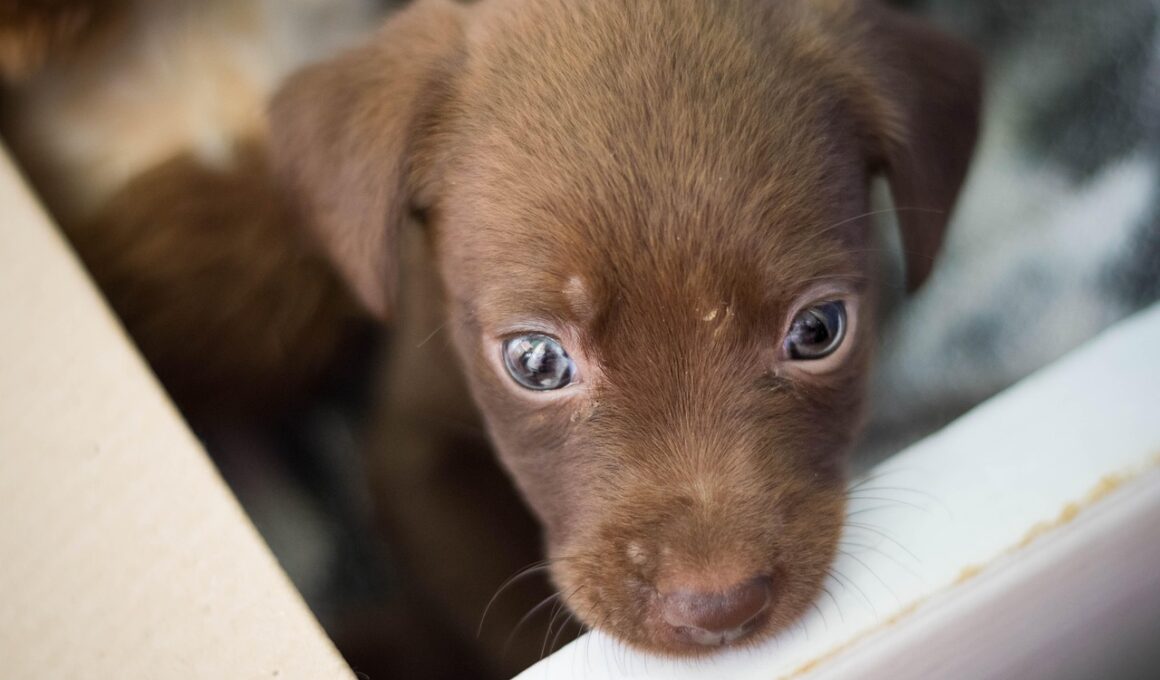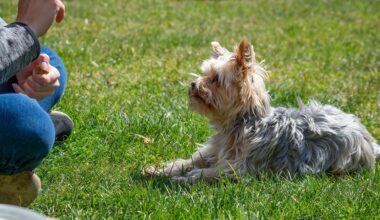The Ultimate Checklist for Bringing a Dog Home
Bringing a new dog into your home can be an incredibly rewarding experience. Before you do, however, ensuring that your environment is suitable is crucial. Start by assessing your living space to determine potential hazards that could harm your new pet. Remove any items that dogs may chew or consume, such as electrical cords, small objects, or toxic plants. Secure any cleaning supplies or chemicals in cabinets or on high shelves, making them inaccessible. Furthermore, it is vital to create a designated space for your new dog. This includes a cozy bed, food and water bowls, and appropriate toys. Dogs thrive on routine; thus, consider creating a schedule for feeding, walks, and playtime. Be patient during this transition, as it may take time for your dog to adjust. It is advisable to provide them with a safe spot to retreat and feel secure. Finally, prepare yourself with knowledge about your dog’s breed, needs, and behaviors to ensure a smooth transition into your home. Happy adopting!
Dog-Proofing Your Home
Once you have assessed your living space, the next step is to dog-proof your home. Start by securing furniture, as dogs can easily knock over items in their enthusiasm. Use corner guards and non-toxic adhesive to protect sharp edges. Next, consider childproof latches for cabinets. These will help keep harmful household items, such as spices and miscellaneous chemicals, out of reach. Additionally, inspect your yard for any gaps in the fence, ensuring it is secure, as many dogs tend to escape. Keeping your dog on a leash while in your yard during their initial days in your home is a wise idea. It’s also essential to invest in the right supplies for your new companion. Ensure they have proper food and water bowls, a leash, collar, and comfortable bedding. Don’t forget about health necessities, such as a vet appointment to ensure your dog is up-to-date with vaccinations. Finally, establishing boundaries within your home helps your pet understand where they can and cannot go. Consistency is key in training a dog, aiding in a harmonious living situation.
Now that you’ve dog-proofed your home, the next essential phase is to ensure you have the right supplies. Essential items include food and water bowls, which should be heavy and stable to avoid spills. Look for high-quality dog food, considering your dog’s age and dietary needs. Don’t overlook treats for training as they can be beneficial for bonding. Additionally, invest in a comfortable dog bed that provides adequate support for your new furry friend. Chew toys are also a must; they help satisfy their natural urge to chew while keeping them entertained. Ensure you have grooming tools, including a brush, shampoo, and nail clippers, as maintaining hygiene is important. A sturdy leash and collar should also be on your checklist, as these will assist in safe outings and training sessions. Dog carriers or harnesses are important for travel and vet visits. These supplies not only enhance your dog’s comfort but also assist in training routines that promote good behavior. Adequate preparation ensures that your dog feels welcome and secure in their new home.
Establishing Routines
Establishing routines is vital for your new canine companion. Like humans, dogs thrive on consistency, and understanding what to expect can reduce anxiety and promote better behavior. Consistency around meal times can help foster healthy eating habits and reinforce your dog’s trust in their environment. Aim to feed them at the same times daily, gradually adjusting as needed according to their age and energy levels. Don’t forget to schedule regular bathroom breaks, especially during the house-training phase. Regular walks are essential for exercise, socialization, and mental stimulation. Consider establishing a specific walking route or time to further enhance routine. Additionally, incorporating playtime into their daily schedule is crucial. Allowing for daily play and interaction can help strengthen your bond and fulfill their need for activity. Training should also feature in your daily routine, even if it’s just short sessions. Teaching them basic commands will not only help in their development but also reinforce their place in your home. Ultimately, your commitment to routine can significantly ease the transition for your new pet.
When preparing your home for a dog, it’s important to consider the safety of your pet and personal possessions. This means understanding the environmental risks. Keep in mind that some items, such as chocolate, onions, and certain plants, can be toxic to dogs. Take time to identify poisonous substances around your home. Secure your trash cans, as the contents may pose serious health risks if ingested. You should also double-check your garden for any chemicals, fertilizers, or plants that could be harmful. Storm drains are other potential hazards; when walking your dog, be mindful of where they are sniffing around. Gates should be secured, ensuring your pet’s safety when outdoors. Use baby gates to stop unauthorized access to restricted areas, and make sure that windows and balconies are secure. If you have children, educate them about proper interactions with the new dog. Supervise playtime to prevent any accidents and foster a healthy relationship between them. Safeguarding your home helps to create a positive environment where your dog can thrive.
Family Preparation
Involving your family in the preparation for a new dog is crucial for fostering a harmonious environment. Take time to discuss responsibilities, roles, and expectations with each family member. It’s essential to have a plan in place to ensure everyone understands their part in your dog’s care. Assign responsibilities such as feeding, walking, and grooming to different family members to promote a sense of involvement. Teaching children how to interact with and care for the new dog properly is needed, stressing that a dog is not a toy but a living being deserving of respect and affection. Establish rules about boundaries for your new pet, including which areas they can access within the house. Be sure to communicate these rules to all family members, including children, and ensure everyone adheres to them consistently. Encourage positive interactions and socialization among family members and the new dog. Observing how family dynamics play out with a new dog can help each member bond better and create an environment where the pet feels loved and secure.
Lastly, prepare for the adjustment period for your new four-legged family member. Understand that bringing a dog into your home is a significant transition for them, and it may take time for them to adjust. To aid in their comfort, maintain a quiet and calm environment initially. Allow your dog to explore their new space at their own pace, providing encouragement and comfort as needed. It’s normal for dogs to display signs of anxiety during this time, such as barking or hiding. Be patient as they begin to trust you and their new surroundings. Establishing a routine can significantly help settle anxieties and promote stability. Monitor their behavior closely, as any unusual signs may necessitate a visit to the veterinarian. Gradually introducing them to family members, other pets, and their routine activities can ease them further into your household. Although the transition can be challenging, it’s essential to remain committed to your new companion’s needs. In time, patience, and love will help your pet feel at home and secure.
Conclusion: Your Commitment to Responsibility
Ultimately, bringing a dog into your home signifies a commitment to responsibility. Preparing adequately ensures that your new pet will feel secure, loved, and welcomed. With the right supplies, routines, and precautions, you can establish a nurturing environment for your dog. Continue researching your canine’s specific needs and respective care requirements. Stay persistent about training and socialization, as these are vital aspects of raising a well-adjusted pet. Regular veterinary checks, vaccinations, and proper nutrition will contribute positively to your dog’s health. Sharing responsibilities within your household will also enhance family dynamics and provide mutual support in your dog’s care. Remain attentive to your dog’s behavior and interactions with family members to ensure a positive adjustment. There will be challenges along the way, but overcoming them together is part of the journey. The reward for your hard work will be a loyal and loving friend who will enrich your life. As you embark on this adventure together, remember that each day is a new opportunity to show your love and strengthen your bond.


